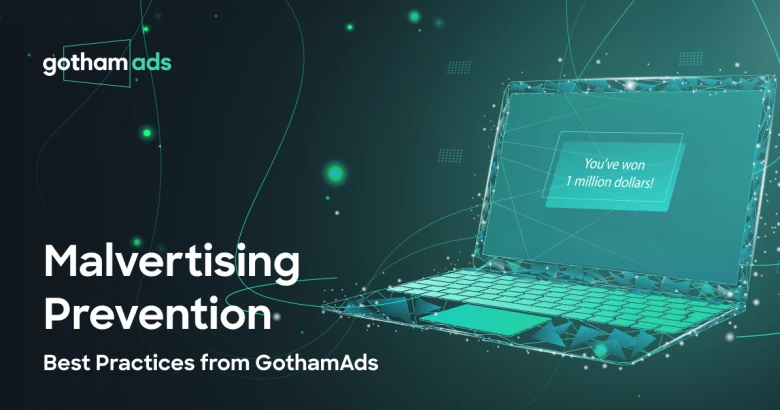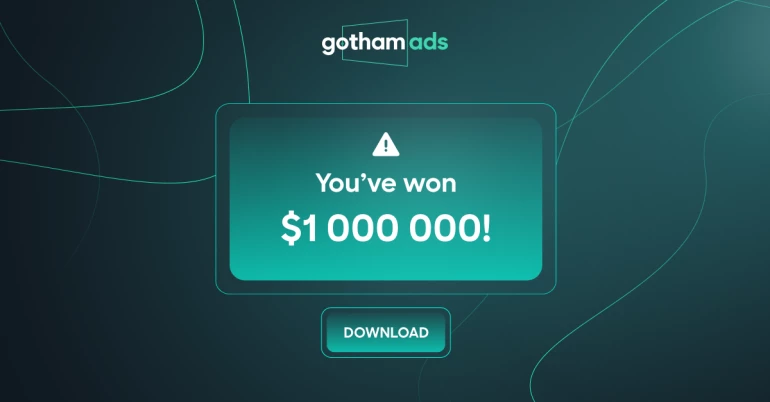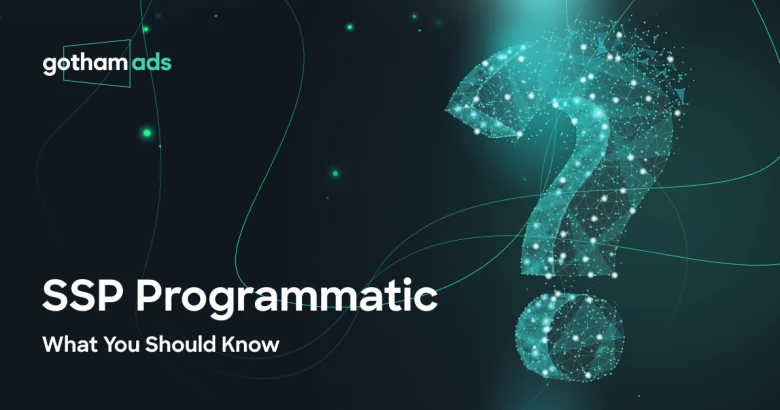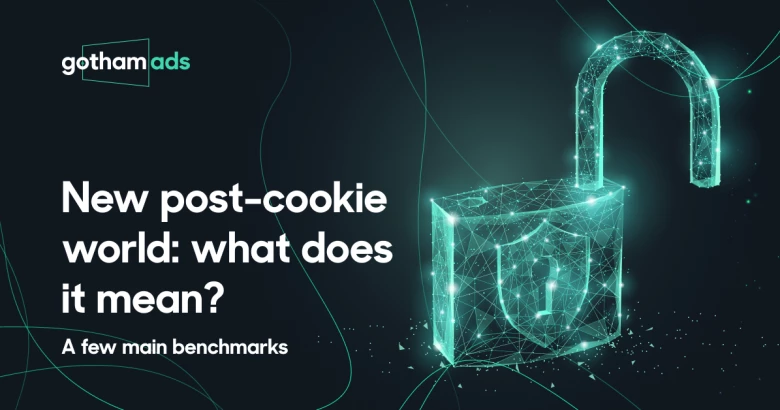Malvertising Prevention: Best Practices from GothamAds

Malvertising is one of the most common and harmful cyber attacks. It not only hurts the income of online advertisers but also ruins the experience for website visitors.
According to Cybersecurity Ventures, the total cost of cybercrime (including malvertising attacks) worldwide went from $3 trillion per year in 2015 to over $6 trillion in 2021. In other words, the loss figures have doubled over a five-year span. This also means that $500 billion is lost on malvertising and other cybercrime each month.
Why is it important to prevent malvertising?
With the constant evolution of the digital landscape and growing sophistication of malvertising threats, it can be challenging to prevent, stop, or predict the sources of malicious advertising in the programmatic ad ecosystem. But it is very important.
GothamAds identifies several key reasons why it is essential to prevent malvertising. First of all, malvertising can lead to the distribution of malware, such as viruses, ransomware, and spyware, which can compromise users' devices and personal information. Preventing malvertising helps safeguard users from security threats.
Secondly, when users encounter malicious ads on a website, they are likely to associate the negative experience with that site. This erodes user trust and can lead to a loss of visitors. By preventing malvertising, publishers can maintain the trust of their audience.
The third reason – maintaining the brand's reputation, which is a valuable asset. Malvertising can tarnish a publisher's image, making it appear unreliable or unsafe. Protecting against malvertising helps preserve a publisher's reputation in the eyes of users and advertisers.
Preventing malvertising also helps to maintain ad revenue. Malicious ads can be blocked or flagged by ad-blocking software and security tools. This can result in lost ad revenue as legitimate ads may also get blocked when users install ad blockers to protect themselves from malvertising.
The final fifth reason is improving user experience. A website's user experience is essential for retaining visitors and encouraging engagement. Malvertising disrupts the user experience, driving users away and potentially decreasing user engagement metrics.
How can you protect against malvertising attacks?
Protecting against malvertising attacks requires a multi-layered approach that combines technological solutions, proactive monitoring, and user education.

1. Check the advertisers and agencies you work with. Verify their legitimacy and reputation in the industry. Don’t rely on the credentials they show you.
You can also establish strict approval processes for advertisers and campaigns, including a review of ad creatives, landing pages, and URLs.
2. Implement ad quality verification tools. GothamAds employs ad quality verification tools and services that scan and analyze ad creatives and URLs for signs of malvertising. Ad verification technologies help us to detect and block malicious code or redirects in real-time.
It’s also important to implement content security policies in your web applications to control which scripts can execute on your web pages. CSP helps prevent the execution of malicious scripts.
3. Utilize ad-blocking and filtering solutions to prevent known malicious domains and content from being displayed on your platform. For example, our team regularly updates our ad-blocking lists to stay current with emerging threats.
4. Implement real-time monitoring tools and analytics to detect unusual traffic patterns, suspicious behavior, or spikes in malicious ad impressions. Set up alerts for potential malvertising incidents to respond quickly.
GothamAds conducts regular security audits and penetration testing to identify vulnerabilities in the advertising platform and fix them.
5. Secure development practices. Follow secure coding practices to minimize the risk of code injection vulnerabilities on your platform.
Conduct regular security audits and code reviews to identify and address potential weaknesses.
Conclusion
The battle against malvertising is a critical endeavor that requires continuous vigilance and proactive measures. The statistics speak volumes – the global cost of cybercrime, including malvertising, has doubled in just a few years, highlighting the urgency of the issue. GothamAds recognizes the importance of preventing malvertising not only for our industry but for the broader digital ecosystem.
At GothamAds, we practice what we preach. We check and verify the legitimacy of our advertisers, employ ad quality verification tools, and use content security policies to protect against malicious scripts. Real-time monitoring, regular security audits, and secure development practices are integral parts of our approach.
We are committed to providing a secure and trustworthy advertising platform for our partners and users. By following best practices and staying ahead of emerging threats, we aim to contribute to a safer and more resilient digital advertising landscape.


